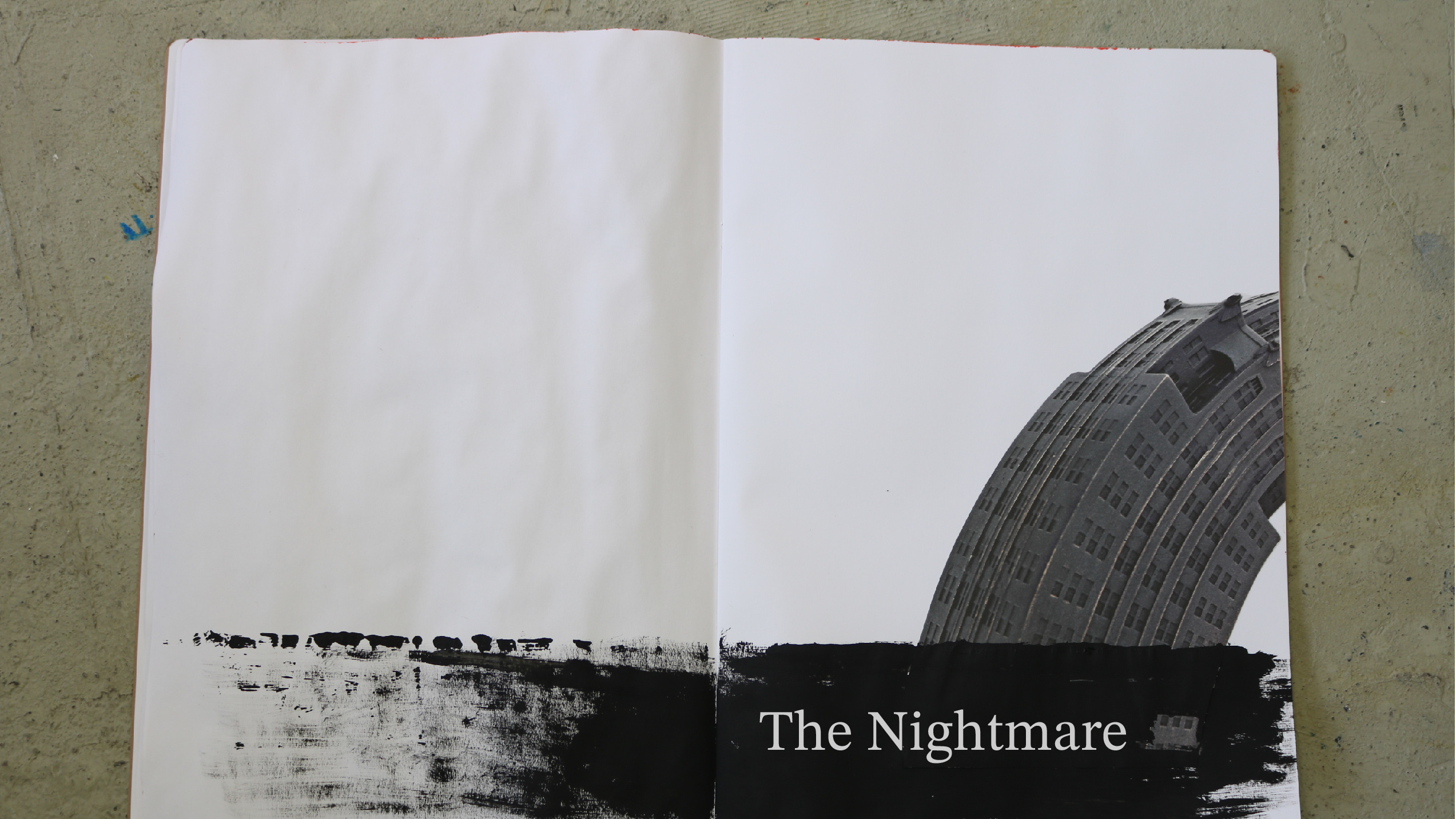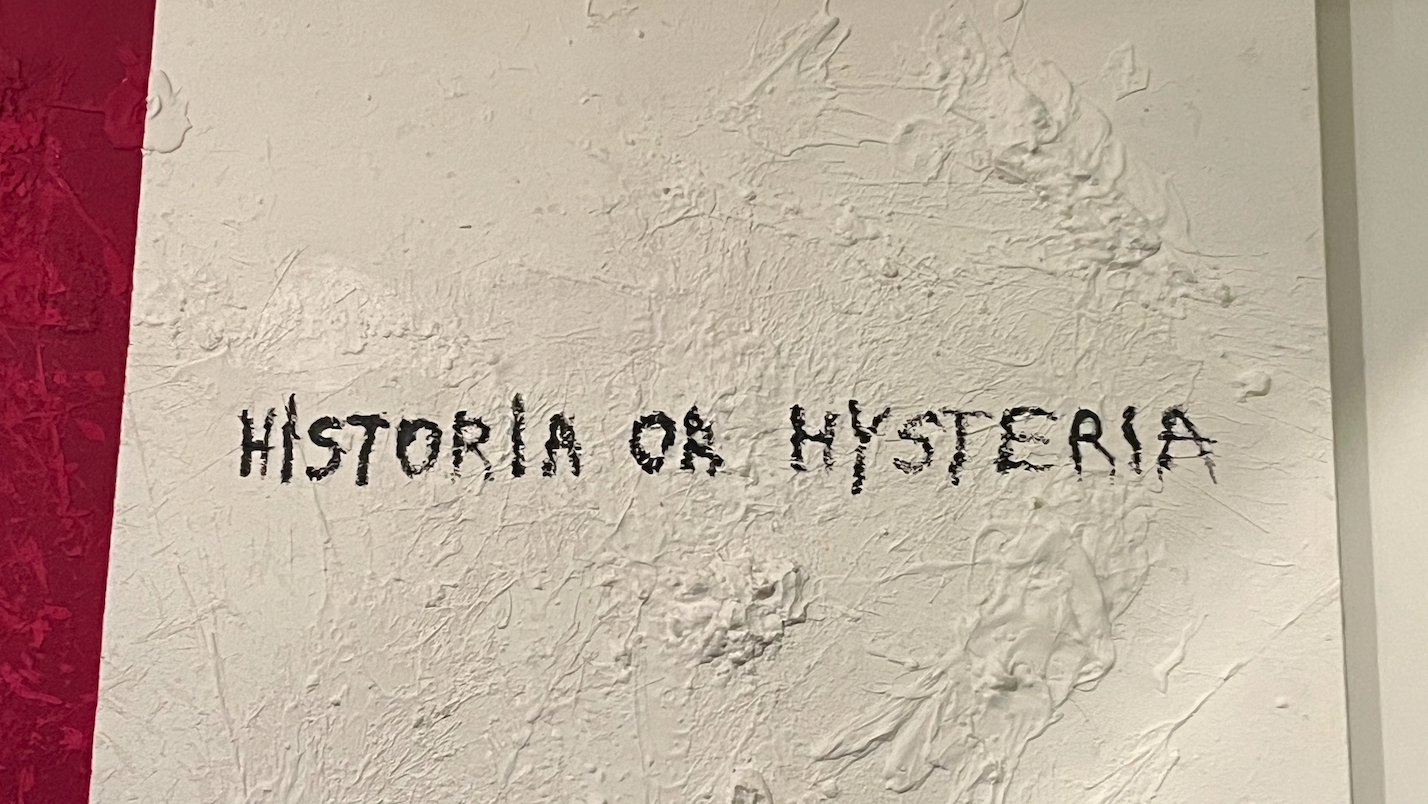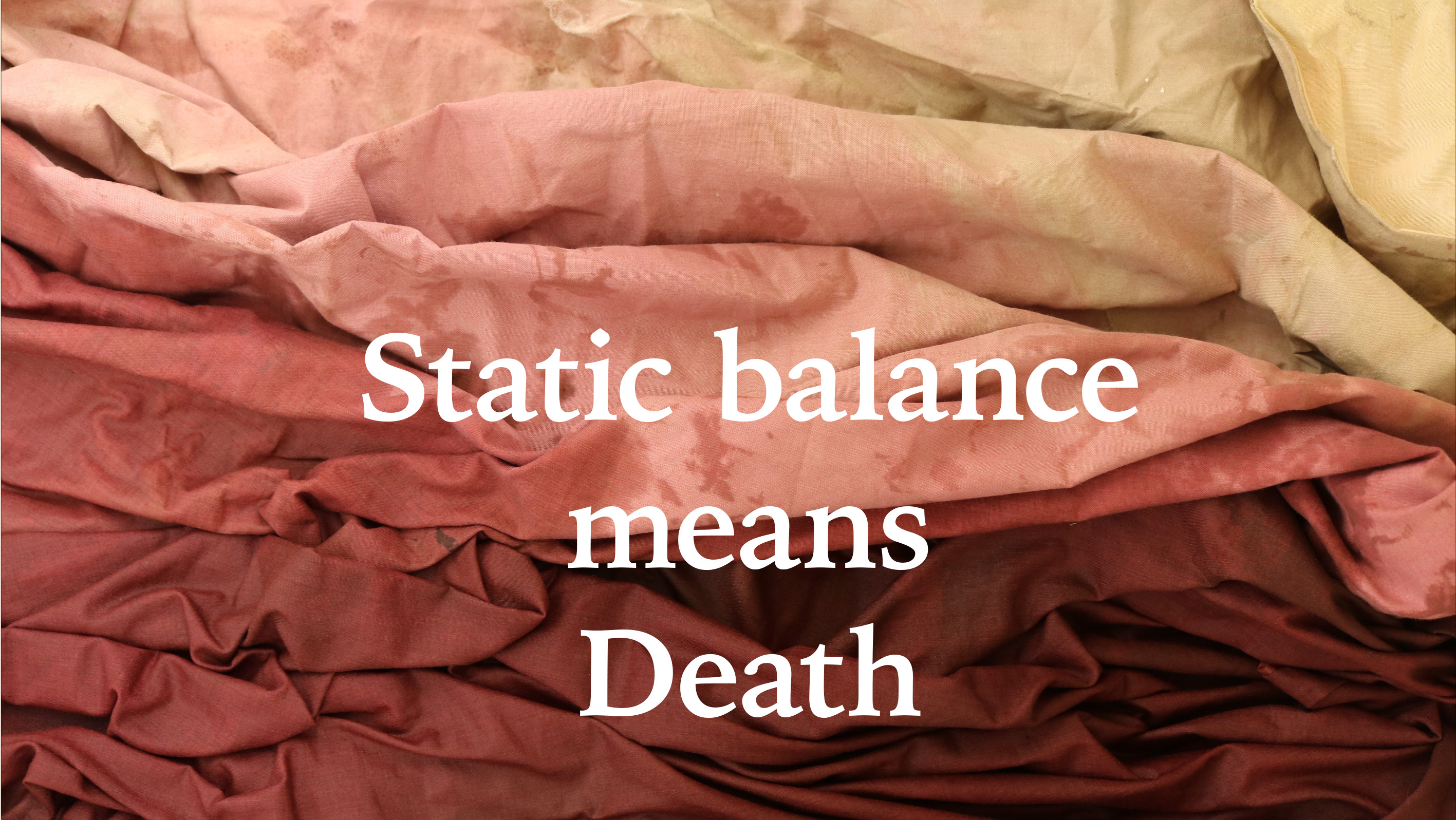[C]isis’ is derived from the Grek, Kríno, Krisis (to decide) and refers to a moment of decisive intervention, a moment of transformation, a moment of rupture.
This text is an invitation to address and reshape the current paradigm that museums worldwide have been following, and that in our current times of constant crisis and social uneasiness, we so evidently need to redefine. Hence it targets first and foremost our understanding of culture, and that consequentially impacts the format, program and the content that museums will have to deal with.
I here will pledge for a recognition of museums as entities for inspiration, learning and aliveness of culture for the existence of our philosophical and existential wonders and the benefit of the public society. This is turning away of the idea as art as something static and instead merges artistic creation with culture in its anthropological dymension and includes the diverse manifestations of social production.
As according to Jazmín Beirak; The traditional distinction between culture ‘art’ and as ‘ways of living’ has been useful to organise thinking and in many occasions a necessary methodological departure point, but it is necessary to understand that the frontiers between these both approximations are porous and both fields permeate into each other. Artistic production and what is recognised as such by institutions have a powerful influence in the perpetuation of specific modes of living, through the presentation of stereotypes or the construction of imaginaries.
The key of my proposal is to use the power that museums hold as cultural institutions and use it to provide spaces for the creation and strengthening of socio-cultural webs, turning them into places ever embracing of change through the intrinsic participation and cooperation of an intersectional public. This strategy approaches culture from the perspective of participation, from the awareness of its imbrication in everyday life and its potential to build less individualistic, rigid, and unsupportive ways of inhabiting the world, and the belief in our capacity to contribute to a fairer, more egalitarian and kinder society.
To understand the roles of museums and how they have become part of our societies it might be useful to go back to the etymological origin of the word as well as its development through history. The Mouseion at Alexandria was a place where- supported by the knowledge stored there- art and science was developed: a place of interdisciplinary research and networking, as you would call it today. The word from the Ancient Hellenic language for the museum (MOYLEION) means the "house of the muses: where the arts and sciences find their berth and cradle. With the Wunderkammer, the museum was reinvented as an amazing place for the purpose of representation of dynastic power, followed by the establishment of museums as a demonstration of bourgeois self-consciousness. In the twentieth century, the ideal of the muscum as an institution for education received a strong boost; the museum as a tourism infrastructure became more and more the institutional, economic, and political role model.
Museum's role in society is central, and this is also evidenced by their privileged location, usually at the center of cities. This is an advantage when thinking about citizen participation, as they are usually areas easily reachable by public transport, and whose contemporary potential is still to be exploited further than through tourism. The ways in which I will propose to use the artifacts and objects that are already part of the existing collections will impulse an open discourse with the city and could be read as a questioning of the identification of the continuist narratives of history with History as such, but mainly as a reminder of the necessity of class-mixed users of public space to diversify the perspectives and realities that give voice to the narration of our present times.
Shaping this proposal both in content programming and infrastructure presents an intuitive but not effortless task of coordination and management. Keeping in mind that this is not a proposal for specific content but, rather the role of museums in fostering equality through diversity and inclusion, I will now outline how this might take shape.
Museums, in my view, have a role to inspire, just as the Greek muses did. They also have the responsibility to use their very central position in the city to work as ancient Agoras or Souks and provide a safe space for socio-cultural interaction, as well as education, philosophy, public discourse, and civic life. They should serve as a refuge for anyone feeling the weight of existential questions, as well as an entity that rather than providing answers, ensures the possibility of a dialectical discourse between people and representatives of all areas of the city life.
Instead of projecting a purely -institutionally curated- educational or aesthetic content, or falling into any propagandistic agenda promoting one single-sided worldview, I vouch for opening museums as places where the main existential, philosophical, and ethical questions can be considered from multiple viewpoints simultaneously and where this is facilitated in a not in an antagonistic or contradictory manner.
My proposal is then to build the program in a way that reflects the currently or permanently relevant issues; What does it mean to live a good life? What is the nature of love? What defines our times? How do we define and experience our freedom? What comes after catastrophe? Who is ‘us’ and who is ‘other’ in our globalized world? How are we separating ‘need’ from ‘desire’ in our consumerism-based economy?
I am confident that there are and will be an increasing amount of artworks that could be exhibited as material representations of these ideas and that would serve as conversation openers.
The main policy change that I am proposing is shifting the way from the exhibited material as the key contribution of cultural entities, and placing the focus on the dialectical energy that these spaces should be serving. Changing the guiding lines of the content would be a first determining step, but is absolutely not enough. The parallel shift of equal importance to reach this goal should be the ensuring of an existing infrastructure that not only allows for but welcomes and encourages individual participation as much as communal interaction.
The shift in infrastructure is then, on a practical level, to reduce the proportion of spaces destined for a polished exhibition of material goods, and increase the amount of both physical and digital space for free and flexible civilian use, potentially disorderly and positively so. This requires the design and manufacturing of resilient and potentially modular software and ‘urban furniture’ that could be repeatedly rearranged to accommodate the needs of whichever activity takes place in these virtual or physical spaces. The shape of these spaces and the implemented design of the furniture that should populate them is of the uttermost importance, as it should communicate by itself that it is there to be used and reinterpreted through participation. It should also be sturdy enough that it resists different types of uses, it should be easily repaired or changed and built with sustainable materials and processes to ensure that the physical-material dimension of the entities also silently but evidently represent the sustainable values that all public institutions should stand for in the current times.
This aims to drastically change the role of cultural institutions under the umbrella of this strategic development, from providing mainly content to being a protective container, which is by no means intending to evacuate the art from the interior of museums, but rather to change what we understand as Art altogether. Following the ideas of John Dewey, I pledge the understanding of Art as Experience, and for using museums as spaces of education because of their inherent social function. Continuing to quote Dewey: “A community or social group sustains itself through continuous self-renewal [ …] Education is thus a fostering, a nurturing, a cultivating, process. All of these words mean that it implies attention to the conditions of growth”
There are already numerous artists and artworks that can serve as a reference of how the initial steps to a more inclusive participation might look like. Thomas Hirschhorn collective works spanning between 1999 and 2013 could be taken as a very obvious translation of what this means. Rafael Lozano-Hemmer has executed some very representative works when it comes to the content of artworks being crowdsourced.
This would unavoidably have consequences on the way the allocation of budget is thought within these institutions. If I am pledging for a community-sourced content to be dealt with in a flexible and adaptable pre-existing container, the re-use of available resources and the great reduction of consumption of new ones is at the key of this idea. These resources previously allocated in the preservation and manicured exhibition of very delicate, to-be-frozen-in-time, highly-priced artifacts or works, would now see itself reduced. We could then program these resources to be redistributed in ways which will directly benefit the members of the community of active participants contributing to any creative areas of the museum’s activities at a professional or amateur level because although artistic, creative, and cultural labor is usually highly dependent on passion or vocation, it is still a legitimate and deserving way of contributing to society.
Participating in the creation of, or in conversations around, central and peripheral cultural topics works as a legitimate way of not only acquiring knowledge but also putting it directly to use. Shifting from passive to active participation requires the public to take agency of their own thoughts and behaviors, to put them to the test, and to represent them. The idea of this can be potentially intimidating for a public that has been for the last decades encouraged to think that artistic creation should either be ‘fine art’ and backed up by a professional trajectory, or should be done privately. Here is where the role of the museum as a cultural entity is central; it should provide a physical and human infrastructure that makes it safe for *everyone* to participate, and that is aware that incentivizing this participation requires an adaptation process from the side of the public.
The greatest task is to be understood then, as an emotional one: the building of trust.
The greatest task is to be understood then, as an emotional one: the building of trust.
Historically, museums have increasingly represented exclusively the dominant narrative and haven’t given space for the content and its consequential implications to be challenged or at least discussed. Anthropomorphizing museums, this attitude has earned them the title of hard-headed personalities, that had very clear ideas of what is ‘worthy’ of praise and gave little importance to the real-life conversations happening in their neighboring areas.
Changing this perception is the hardest task involved in the change that I am proposing, but it is the most determining one as well as the only measure of success.
Participating in community life has been accessible to and required by certain groups differently from others at a disproportionate rate. Having the time and money to engage in ‘high’ art or ‘fine’ culture is a privilege accessible to only a section of the population, this has consequently created ideas around the exhibiting of content that reflects only the taste and preferences of this section of the population as deserving of being in spaces dedicated to culture. Only certain tastes are praised and welcomed at what should be epicenters of culture capable of representing us all.
However, if we again come closer to an idea of culture in the anthropological sense of the word, I would dare to say that all cities are filled with people engaging in different forms of creation on a weekly if not daily basis. If I dared to say even more, I would invite us to make notice or distinction of which of these creators are engaging in creativity mainly for profit, and who is doing so to animate and enrich their lives and the lives of those around them. Imagine if it was the case that citizenship and its privileges were acquired through participation in community life and care, with its respective pleasant and not-so-pleasant duties, we would probably have citizen statistics that would look very different. And we would also have different ideas about which types of creation are worthy of portraying and applauding.
Following this set of ideas, it could be that the very people who have and use tacit knowledge on the creation and strengthening of community ties are the ones whose interest hasn't been taken into account in the programming of so-called ‘cultural activities’. Making sure that this group of people have enough income and free time that isn’t filled with less recognized duties around care is a larger socio-political project, but making sure that these people feel like their interests and skills are noticed, reflected, and desired in state-owned cultural entities should be already reflected on cultural entities agendas.
It is hard, but not impossible, to see how museums have already been taking some steps toward this, however, it is not hard to see why these efforts have been small and not recurrent. Stated-owned cultural entities have for a very long period of time disregarded if not violated the interests of less privileged groups, from the appropriation (or theft) of cultural artifacts to exhibitions with very clear political agendas.
It is not hard to see why very large groups of the population are skeptical of the intentions of national cultural entities. With little to no recognition of these past choices, once museums try to engage with members of less privileged communities, it might appear again as if this engagement was another form of appropiating their creative efforts or interests for statal or the museum’s economic benefit.
This reluctance to engage might be interpreted by museums as a simple lack of interest, and in turn make it seem like its efforts to hold space for deviant representations of culture aren’t recognized, used, or simply worth the effort.
The determined intention to drastically break with this past dynamic should be clearly stated and translated into very specific practices, that will very reasonably not seem successful at first. It is the endurance of these practices and the upholding of these values in all other activities through a prolonged time that will create the very necessary trust for this proposed interaction with and in museums.
In this sense, I see the museum’s role as the biggest defendant of everyone’s right to their own point of view and creative practices, as well as the best-trained facilitator of conversations around these topics. Fortunately, there is a lot of work done already on how this might take shape, and there are already many physical and digital tools that could be used to form relatively stable practices, and that could in turn educate and create habits of harmonic and respectful discussions and activities.
In my dreams, museums are safe houses for those who seek impossible answers to life’s main questions and those who want to be around creation in any of its phases, not only done and polished artworks or calculated goal-oriented solutions. To me, the ‘finished and approved’ works of art that museums currently contain and that represent dangerously closed historical narratives should be of less importance, if not any.
If we, for exclusively practical purposes, understand the state as a political entity with a defined territory, government, and population, and we take museums to be statal entities, we need to make sure that the importance or interests of the government are not above those of the existing population within that territory. This would imply a two-way mutual influence, in which politics isn’t separated, but is informed by and could attempt to mimic the organic and diverse community care-oriented practices that happen in these spaces.
Cultural policies should be aimed at guaranteeing basic issues such as the right of individuals and communities to express themselves, to access and cultural participation, to the construction of identities, and to memory. Encouraging participation and cooperation, to a similar degree, from all present demographic groups is not an easy task, but it should be what takes up most of the efforts of the cultural entity to ensure diversity and inclusion. This requires actively dismantling potential literal or symbolic walls of prejudice and status, and a precise effort to make sure that, especially people from any group historically or currently marginalized, feel not only welcome out of duty or political correctness but that their participation is tacitly desired and celebrated.
This proposal doesn’t seem to me as a drastic change of trajectory of what museums have been aiming for in the past, but as a consequential step that, just as the acceleration of current social changes, aims to match this speed and work prefiguratively with the positive currents of our time.


